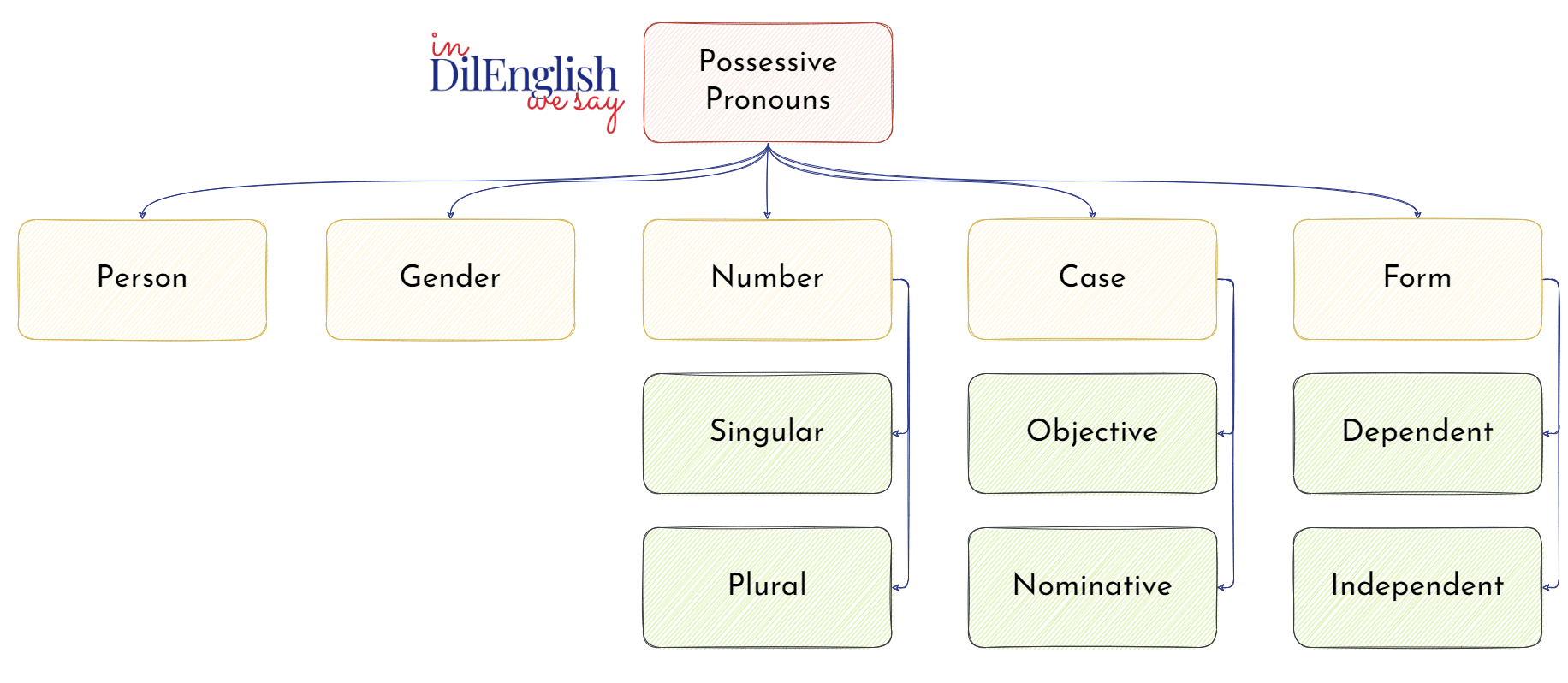Possessive pronouns indicate ownership.

Possessive pronouns have the same distinctions of person, number, and gender as personal pronouns.
Possessive pronouns have two forms, namely the dependent (or conjoint) form, and the independent (or absolute) form.
Dependent (Conjoint) form
| 1st person | 2nd person | 3rd person | |
| Singular | My | Your [1] | His, her, its |
| Plural | Our | Your | Their |
The conjoint form is used when the possessive pronoun comes before the noun it modifies. The conjoint form of the possessive pronoun is used as an attribute.
In his turn, old Jolyon looked back at his son. (Galsworthy)
Absolute (Independent) form
| 1st person | 2nd person | 3rd person | |
| Singular | Mine | Yours | His, hers [2] |
| Plural | Ours | Theirs |
The absolute form is used when the possessive pronoun does not modify any noun.
The absolute form of the possessive pronoun may be used as subject, predictive, or object. The group ‘preposition + absolute form’ may be used as an attribute.
“Yours (sum of money) won’t come short of a hundred thousand, my boy,” said old Jolyon. (Galsworthy) (SUBJECT)
When he turned round again he saw Fleur standing near the door holding a handkerchief which the boy had evidently just handed to her. “F.F.”, he heard her say. “Fleur Forsyte — it’s mine all right. Thank you ever so.” (Galsworthy) (PREDICATIVE)
…he realized that she was making an effort to talk his talk, and he resolved to get away from it and talk hers. (London) (OBJECT)
…and while she rattled on, he strove to follow her, marveling at all the knowledge that was stowed away in that pretty head of hers … (London) (ATTRIBUTE)
[1] The archaic pronouns of the second person singular are thy (conjoint), thine (absolute).
[2] No absolute form of the third person neuter pronoun exists.
